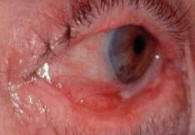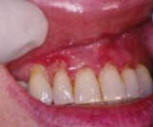Pemphigoid autoimmune
Search Cidpusa web
Bullous Pemphigoid a autoimmune skin disorder.

- Pemphigus
- Erythema Multiforme
- Pemphigoid, Benign Mucosal
- Dermatitis Herpetiformis
- Epidermolytic Hyperkerotosis
- Epidermolysis Bullosa
- Epidermolysis Bullosa Acquista
- Herpes
-
Synonyms/other names
General Discussion
Bullous Pemphigoid is a rare, autoimmune, chronic skin disorder characterized by blistering. This disorder occurs most frequently in elderly people. Generalized blistering occurs in and under the upper layers of the skin and usually subsides spontaneously within several months or years. However, symptoms may recur. In some rare cases of Bullous Pemphigoid, complications such as pneumonia may develop.
Symptoms
The first symptom of Bullous Pemphigoid is usually redness of the skin surrounding a lesion, scar, and/or the navel. Within weeks, thin walled blisters with clear fluid centers (bullae or boil) appear on the undersurfaces of the arms and legs (flexor surfaces), in the armpits (axillae), on the abdomen, and/or around the groin. Unlike Pemphigus, Bullous Pemphigoid blisters usually do not affect the mucous membrane lining the mouth; if they do they heal rapidly.
The blisters are usually hard and tight, and contain clear or blood-tinged fluid; they do not rupture easily. If the blisters do rupture, pain may occur but healing is usually rapid.
Bullous Pemphigoid usually itches and in its early phase, itching and hive-like patches may be the only symptoms.
After a few months, the symptoms of Bullous Pemphigoid often disappear spontaneously, but they may recur for no apparent reason.
Causes
The exact cause of Bullous Pemphigoid is a autoimmune reaction by the body against the glue holding the skin together;
. Autoimmune disorders are generated when the body's natural defenses (e.g., the immune system with its antibodies) against
"foreign" or invading organisms, attack healthy tissue.
Certain drug reactions can produce skin lesions that are very similar to Bullous Pemphigod. It is essential to determine whether side effects of the
pharmaceuticals may be causing the blisters. Infections can trigger this disease.
In 1990 it was determined that the gene for Bullous
Pemphigoid is located on chromosome 6 and has been mapped to 6p12-p11.
Please do to the next page
